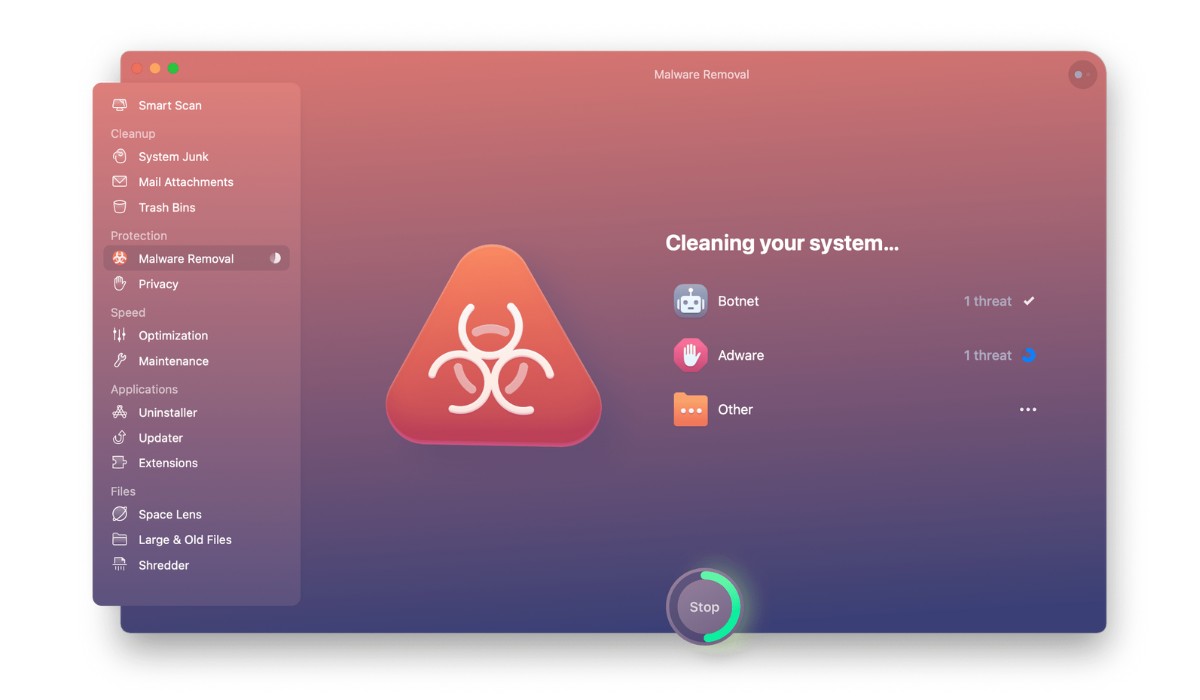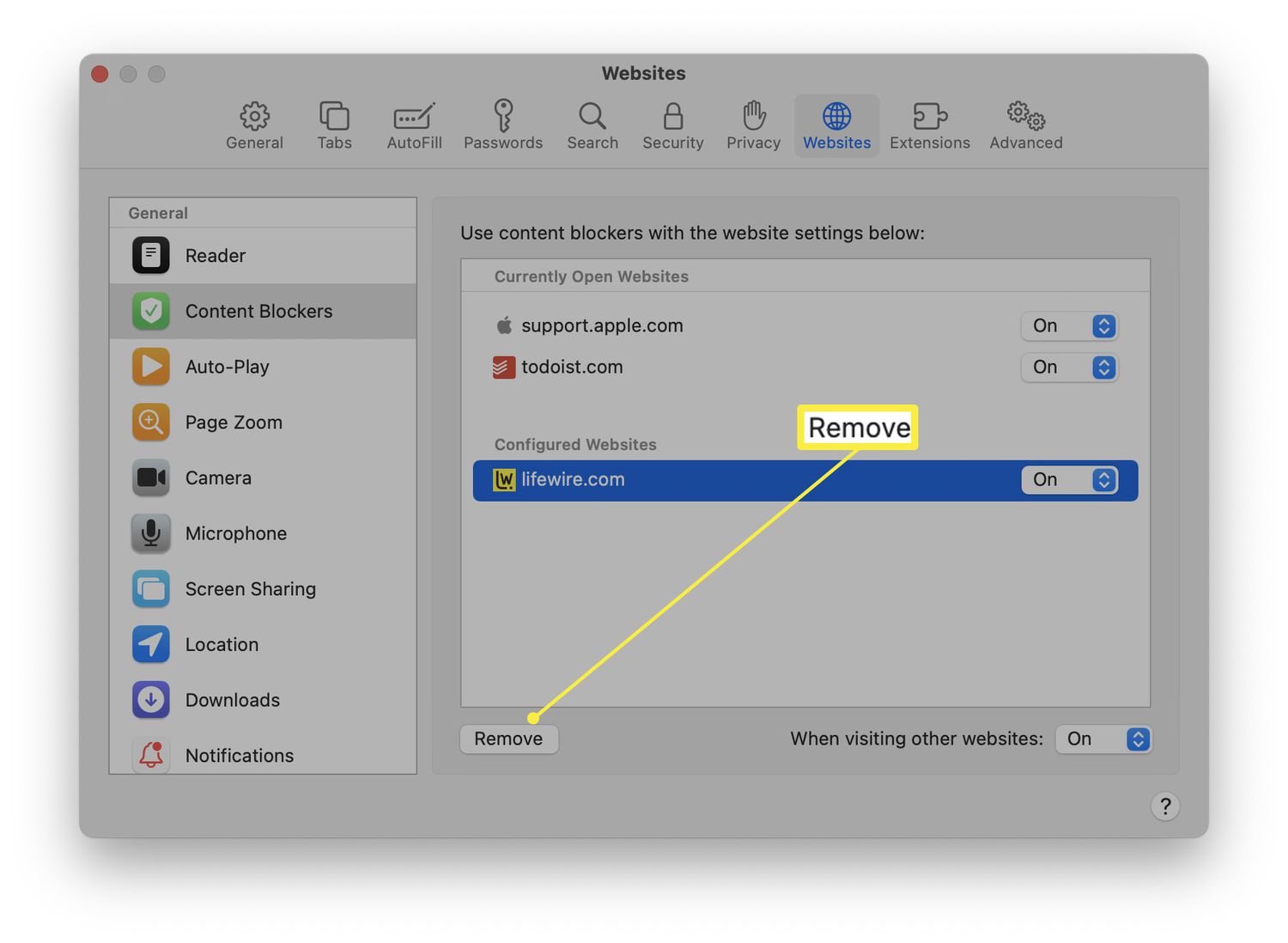Introduction
Safari, Apple's native web browser, is renowned for its sleek interface and seamless integration with the Apple ecosystem. However, as with any browser, users may encounter the frustration of "Top Hits" cluttering their Safari browsing experience. These Top Hits are the suggested website links that appear when typing in the address bar, often causing inconvenience by displaying irrelevant or outdated suggestions.
Thankfully, there are several effective methods to declutter Safari and eliminate these bothersome Top Hits. By following the steps outlined in this guide, you can regain control of your browsing experience and ensure that Safari's suggestions are tailored to your preferences.
In the following sections, we will delve into the step-by-step processes for clearing Safari history, disabling Safari suggestions, managing Safari extensions, and resetting Safari settings. Each method offers a unique approach to addressing the issue of Top Hits, empowering you to customize your Safari browsing environment according to your specific needs and preferences.
Whether you're seeking a quick solution to remove unwanted suggestions or aiming to optimize Safari's performance, this comprehensive guide will equip you with the knowledge and tools necessary to streamline your browsing experience. Let's embark on this journey to reclaim control over Safari's suggestions and enhance your browsing efficiency.
Clearing Safari History
Clearing your Safari browsing history is a fundamental step in decluttering the Top Hits suggestions. By erasing the history of visited websites, you can ensure that outdated or irrelevant suggestions are not displayed when typing in the address bar. This process also enhances your privacy and security by removing traces of your browsing activity. Here's how to clear your Safari history:
-
Open Safari Preferences: Launch Safari and click on the "Safari" menu located at the top-left corner of the screen. From the dropdown menu, select "Preferences."
-
Access History Settings: In the Preferences window, navigate to the "Privacy" tab. Here, you will find the option to manage your browsing history.
-
Clear History: Click on the "Manage Website Data" button to view the list of websites that have stored data on your device. To clear your entire browsing history, click on the "Remove All" button. Alternatively, you can selectively remove specific websites by selecting them from the list and clicking "Remove."
-
Confirm Clearing: A confirmation dialog will appear, asking if you are sure you want to remove the selected data. Click "Remove Now" to proceed with clearing your browsing history.
-
Additional Settings: To further customize your history management, you can adjust the "Remove history items" setting to automatically clear your history after a specified duration, such as every day, week, or month.
By following these steps, you can effectively clear your Safari browsing history, ensuring that outdated and irrelevant suggestions are no longer displayed as Top Hits. This process also contributes to maintaining your privacy and optimizing Safari's performance by removing unnecessary data.
Once you have cleared your browsing history, you will notice a significant improvement in the relevance and accuracy of the suggestions provided by Safari. This simple yet impactful action empowers you to take control of your browsing experience and tailor Safari's suggestions to align with your current interests and browsing habits.
Disabling Safari Suggestions
Safari Suggestions, while intended to enhance the browsing experience by providing relevant website suggestions, can sometimes lead to the display of unwanted or outdated links as Top Hits. Disabling Safari Suggestions offers a strategic approach to decluttering the address bar and ensuring that the suggestions align more closely with your browsing preferences. Here's how to disable Safari Suggestions:
-
Open Safari Preferences: Launch Safari and click on the "Safari" menu located at the top-left corner of the screen. From the dropdown menu, select "Preferences."
-
Access Search Settings: In the Preferences window, navigate to the "Search" tab. Here, you will find the option to manage Safari's search engine and suggestions settings.
-
Disable Safari Suggestions: Uncheck the box next to "Include Safari Suggestions" to disable the feature. This action prevents Safari from displaying suggestions based on your browsing history and bookmarks when typing in the address bar.
-
Customize Search Engine: Additionally, you can customize your default search engine by selecting your preferred option from the "Search Engine" dropdown menu. This allows you to tailor your search experience according to your preferred search provider.
By following these steps, you can effectively disable Safari Suggestions, thereby eliminating the display of irrelevant or outdated links as Top Hits. This process empowers you to take control of the suggestions presented by Safari, ensuring that they align more closely with your current browsing interests and needs.
Once Safari Suggestions are disabled, you will notice a significant improvement in the relevance and accuracy of the suggestions provided by the browser. This simple yet impactful action allows you to streamline your browsing experience and ensure that the address bar suggestions are tailored to your preferences, ultimately enhancing your overall browsing efficiency.
Disabling Safari Suggestions is a proactive step towards optimizing your browsing environment and ensuring that the suggestions presented by Safari are aligned with your current browsing habits and interests. This customization empowers you to curate a more personalized and efficient browsing experience within the Safari browser.
Managing Safari Extensions
Safari extensions are powerful tools that enhance the functionality and customization options within the Safari browser. However, an excessive number of extensions can lead to clutter and potentially impact the performance of the browser. Managing Safari extensions is essential to ensure a streamlined browsing experience and optimize the suggestions provided by Safari. Here's a comprehensive guide on how to effectively manage Safari extensions:
-
Accessing Safari Extensions: To manage Safari extensions, start by opening the Safari browser on your Mac. From the top menu, click on "Safari" and select "Safari Extensions" from the dropdown menu. This will open the Safari Extensions Gallery, where you can explore and manage your installed extensions.
-
Reviewing Installed Extensions: Take a moment to review the extensions currently installed in your Safari browser. Evaluate each extension based on its utility and relevance to your browsing habits. Consider whether the extension contributes positively to your browsing experience and whether it aligns with your current needs.
-
Removing Unnecessary Extensions: Identify and remove any extensions that are no longer useful or relevant. To remove an extension, click on the "Uninstall" button associated with the respective extension in the Safari Extensions Gallery. Confirm the removal when prompted. By decluttering your list of extensions, you can streamline the browsing experience and potentially improve the accuracy of Safari's suggestions.
-
Updating Extensions: It's important to keep your extensions up to date to ensure compatibility with the latest Safari browser version and to benefit from any improvements or bug fixes. Check for updates for your installed extensions by navigating to the "Developers" tab in the Safari Extensions Gallery and selecting the "Updates" section.
-
Exploring New Extensions: If you find that certain aspects of your browsing experience could be enhanced, consider exploring new extensions available in the Safari Extensions Gallery. Look for extensions that align with your specific needs, such as productivity tools, ad blockers, or security enhancements. Install new extensions selectively, ensuring that they contribute positively to your browsing experience without causing unnecessary clutter.
By effectively managing your Safari extensions, you can optimize the performance of the browser and tailor the suggestions provided by Safari to align more closely with your browsing habits and interests. This proactive approach empowers you to curate a personalized and efficient browsing environment within the Safari browser, ensuring that the extensions enhance your experience without overwhelming the browser with unnecessary clutter.
Managing Safari extensions is a continuous process that allows you to adapt and refine your browsing environment according to your evolving needs and preferences. By regularly reviewing, removing, updating, and selectively installing extensions, you can maintain a streamlined and efficient browsing experience while leveraging the full potential of Safari's extension ecosystem.
Resetting Safari Settings
Resetting Safari settings offers a comprehensive solution to address persistent issues and restore the browser to its default state. This process can effectively resolve various browsing-related issues, including the cluttering of Top Hits in the address bar. By resetting Safari settings, you can eliminate potential conflicts, clear accumulated data, and ensure that the browser functions optimally. Here's a detailed guide on how to reset Safari settings:
-
Open Safari Preferences: Begin by launching the Safari browser on your Mac. From the top menu, click on "Safari" and select "Preferences" from the dropdown menu. This will open the Preferences window, providing access to a wide range of settings and customization options.
-
Navigate to the Advanced Tab: In the Preferences window, navigate to the "Advanced" tab. This section houses advanced settings that govern the behavior and functionality of the Safari browser.
-
Enable Develop Menu: To access the option for resetting Safari, you need to enable the Develop menu in Safari. To do this, check the box next to "Show Develop menu in menu bar" at the bottom of the Preferences window.
-
Access Develop Menu: Once the Develop menu is enabled, you will notice a new option in the top menu bar labeled "Develop." Click on "Develop" to reveal the dropdown menu containing advanced developer-related options.
-
Select Empty Caches: From the Develop menu, select the "Empty Caches" option. This action clears the cached data stored by websites, which can contribute to the cluttering of Top Hits and affect the browsing experience.
-
Reset Safari: After emptying the caches, return to the Develop menu and select "Reset Safari." A dialog box will appear, presenting a list of options to reset various aspects of the browser. Review the options and select the relevant checkboxes based on your preferences.
-
Confirm Reset: Once you have selected the desired reset options, click the "Reset" button to initiate the process. Safari will proceed to reset the selected settings, clearing data and restoring default configurations.
By following these steps, you can effectively reset Safari settings, addressing potential issues and optimizing the browser's performance. This process serves as a comprehensive solution to declutter the address bar and ensure that the suggestions provided by Safari align with your current browsing habits and interests.
Resetting Safari settings is a proactive measure that empowers you to maintain a streamlined and efficient browsing environment. It allows you to address persistent issues, clear accumulated data, and restore the browser to its default state, ultimately enhancing your overall browsing experience within the Safari browser.

























